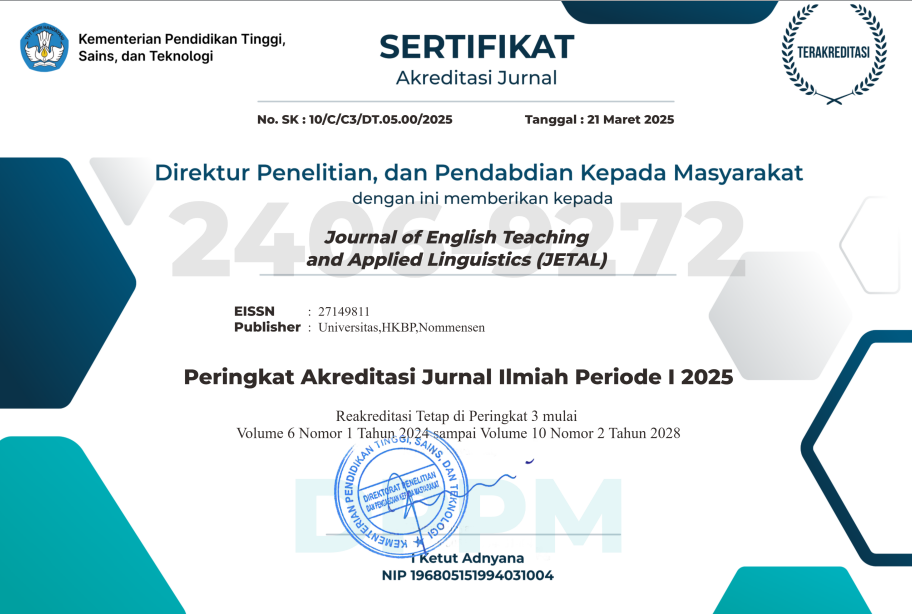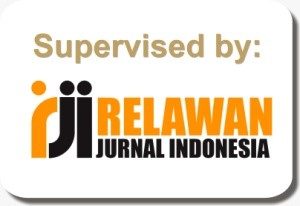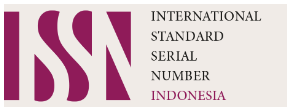The Correlation Between English Language Learning Strategies And Students Thinking Style At The Second Grade Of Man 1 Kolaka
Abstract
This research was conducted at MAN 1 Kolaka. The objective of this reaseach is to find out information and data weather there is any correlation between English language learning strategy and students’ thinking style at the second grade AGAMA I of MAN 1 Kolaka. The research design is descriptive quantitative. The data were collected through questionnaires. English Language Learning Strategy at the second grade AGAMA I of MAN 1 Kolaka are Metacognitive with the total frequency is 47% percent and Studets’ Thinking Style are Extrovert with the total persentage is 53%. The Population of the research was the second grade students of MAN 1 Kolaka and the sample of the research was class AGAMA I which consisted of 15 students. The data analysis used in this research was product moment formula which showed that there was no any correlation between English Language Learning Strategy and Students’ Thinking Style. It could be synthesized that hypothesis were r-count was lower than r-table. So H1 was rejected and H2 was accepted. The coefficient Correlation between English Language Learning Strategies and Students’ Thinking Style did not have any significant correlation with the r-count = -0,218 was lower than r-table 0,514 at the significance level 5% and degree of freedom (df) was 15 (-0,218>0,514). Therefore, it was categorized as low correlation. H0 and H1 was rejected and H2 was accepted.
References
Cohen A. D. (1996). Second Language Learning And Use Strategies: Clarifying The Issues. Center for Advanced Research on Language Acquisition. University of Minnesota, Minneapolis
Dweck, C.S (2006) The New Psychlogy of Success. United States: Random House
Fatih, N.I (2018) The Correlation Between Language Learning And Students Thinking Style. Unpublished Thesis
Hardan, A.A (2013) Language Learning Strategies; A General Overview. Ira: Elesevier Ltd.
Heidairie, F. (2012) The relationship between Thinking style and metacognitive awareness among Iranian EFL learners . International Journal of Linguistics, 4(3), 721-733
Lestari, O.N. (2015) Language Learning Strategies of English Education Departemen FITK (A Comparison Descriptive Study at The Fourth and Sixth Students). Unpublished Thesis
Mahmood, K B, Hashemnezhad, H & Javidi, S, (2013) The relationship between language learning strategies and thinking styles of Irania EFL learners. International journal of Rerearch Studies in Language Learning. 2013 October, Volume 2 Number 4, 3-19
Negahi, M., Nouri., & Alireza K. (2015) The Study of Learning Style, Thinking Styles and English Lanuage Academic Self-efficacy among Students of Islamic Azad University of Behbahan considering their field of study and gender. Theory and Pratice in Language Studies, 5(8), 1722- 1729. ISSN: 2243-7754
Nikoupour, J., Alam, M., &Tajbakhsh. (2012). Thinking style and achievement motivation: a survey study among Iranian EFL learners. InternationalJournal of English and Literature, 2(3), 89-104.
Seif, A. (2008). Educational psychology. Tehran, Iran: Davaran Publication.
Setiyadi, et.al. (2016) How Successful Learners Employ Learning Strategies in an EFL Setting in the Indonesian Context. English Language Teaching; Vol. 9, No. 8
Sriwarsiti, E., (2017) The Correlation between Thinking Style and Academic Achievement of Undergraduate English Study Program Students of UIN Raden Fatah Palembang. Unpublished Thesis. UIN Raden Fatah Palembang
Sternberg, R. J., & Zhang, L. (2005). Styles of Thinking as a Basis of Differentiated Instruction. Theory and Pratice in Language Studies, 44(3), 245-253.
https://doi.org/10.1207/s15430421tip4403_9
Sugiyono (2012) Metode Penelitian Kualitatif, Kuantitatif dan R&D. Bandung: Alfabeta
Tesch, F., Coelho, D, and Drozdenko, R (2011). We Have Met the Enemy and He Is Us: Relative Potencies of Classroom Distractions. Business Education Innovation Journal, Volume 3, Issue 2
Authors retain copyright and grant the journal right of first publication with the work simultaneously licensed under a Creative Commons Attribution-ShareAlike 4.0 International License (CC BY-SA 4.0) that allows others to share the work with an acknowledgment of the work's authorship and initial publication in this journal.
Authors are able to enter into separate, additional contractual arrangements for the non-exclusive distribution of the journal's published version of the work (e.g., post it to an institutional repository or publish it in a book), with an acknowledgment of its initial publication in this journal.
Authors are permitted and encouraged to post their work online (e.g., in institutional repositories or on their website) prior to and during the submission process, as it can lead to productive exchanges, as well as earlier and greater citation of published work (See The Effect of Open Access).






